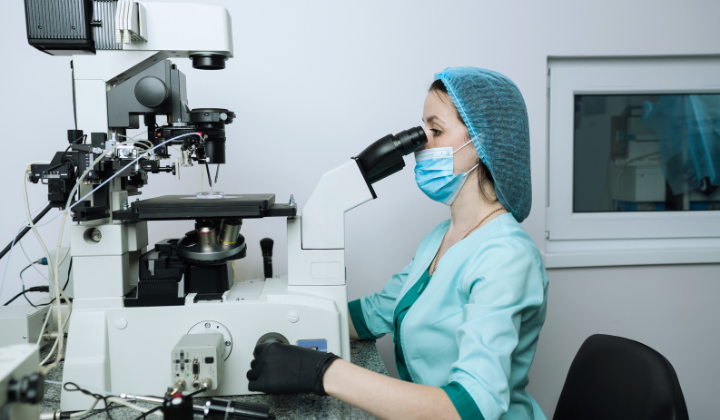
– Manuscript –
Israeli scientists say they have created a model of a human embryo from stem cells in a laboratory.
The embryo model – created without using sperm, eggs or a uterus – is designed to support research on early human development.
Only stem cells were used in the process. Stem cells are simple cells in the body that can develop into one of many specialized cells. Researchers say the embryo models cannot grow into babies. But they are complete enough to provide information about what happens in the embryo during a pregnancy.
The use of embryo models permits scientists to carry out research without the ethical concerns linked to experiments using real embryos.
Several international research teams have been working separately on studies involving human embryo models. Scientists from the United States, Britain and China published their research results on the subject in recent months.
The Israeli researchers say their embryo model looks similar to a real human embryo at day 14. At this point, the embryo model has begun building inner structures. But it has not yet developed enough to start forming body organs, the team said.
The scientists recently reported their results in a study in the publication Nature. They also shared their research with scientists during a June meeting of the International Society for Stem Cell Research in Boston, Massachusetts.
The Israeli team noted that their current research is still a long way from being able to create a full embryo in the lab.
Jacob Hanna was the team leader on the research. He told the Reuters news agency, “The question is, when does an embryo model become considered an embryo? When that happens, we know the regulations. At the moment we are really, really far off from that point.”
But the researchers said the work could open the door to new ways to study early human development. For example, the embryo models could test the effect of drugs on pregnancies. They could also help scientists better understand miscarriages and genetic diseases. And they might one day be used to grow transplant tissues and organs.
Hanna noted that the models are not exactly like human embryos. “There are differences from human embryos, but still, this is the first time, if you open an atlas or a textbook, you can say – yeah I can really see the similarity between them,” he said.
Hanna said his team took stem cells produced from adult human skin cells, as well as others, and let them develop in the lab. The researchers then reverted the cells to an early state, with the possibility that they could develop into different kinds of cells.
The team then genetically changed the cells in an effort to get them to start developing into something that looks and behaves like a real human embryo. However, the researchers said their creation is not an actual or synthetic embryo. Instead, it is considered a model that shows how a real embryo works.
Hanna said the process was able to start effective structure development. But he added that “the farthest we could get is day 14 in human embryo development.”
Hanna said the team’s next goal will be to extend model development to 21 days and also reach a success rate of at least 50 percent.
Words in This Story
uterus – n. (medical) a term for the organ in a woman that holds the baby during pregnancy; womb
ethical – adj. relating to what is right or wrong
regulation – n. an official rule that controls how something is done
miscarriage – n. a situation in which a baby is born too early and dies because it has not developed enough to survive
transplant – v. to perform a medical operation in which an organ or other part that has been removed from the body of one person is put into the body of another person
atlas – n. a book of maps
revert – v. to go back to the way something was before
synthetic – adj. a group of products made from artificial substances, often copying a natural product
*This article has been edited and reprinted from VOA Learning English with permission from Voice of America (VOA) for use in English language materials.
